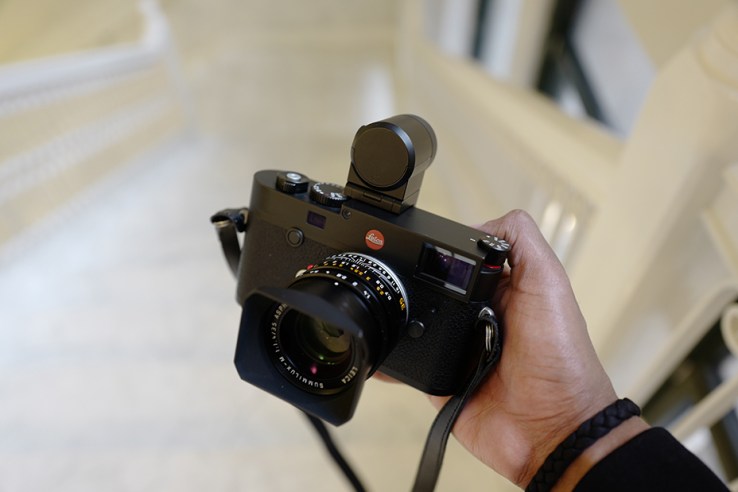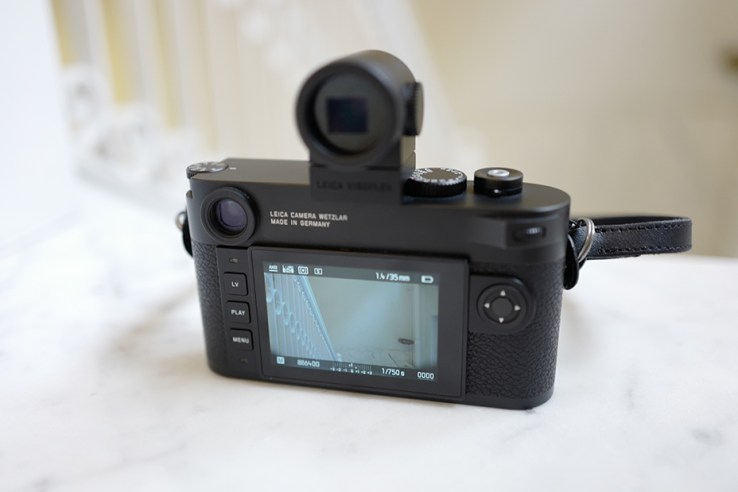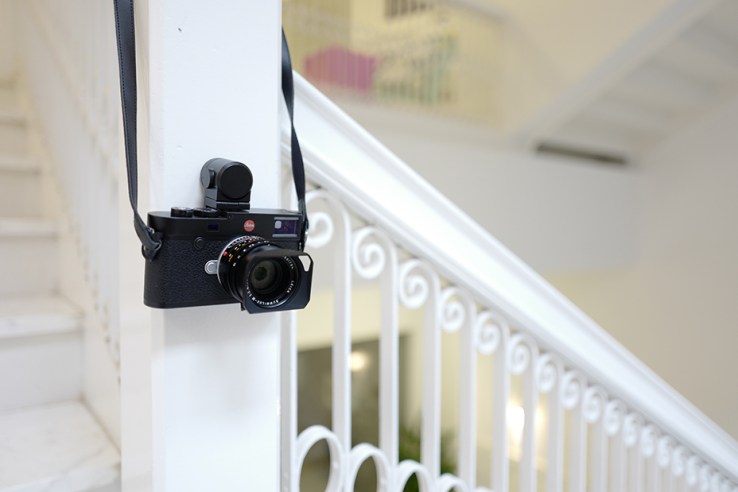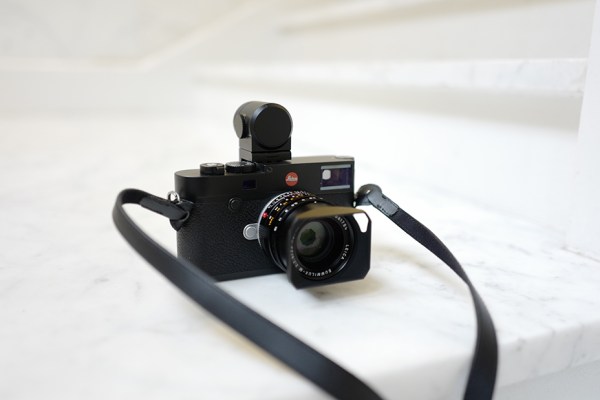If you’re looking for a great camera with interchangeable lenses, I advise you to look at Canon and Sony offerings so you can start building personal expertise. But if you can already shoot and want something unique, then by all means buy a Leica — like the company’s latest, the M10 — which costs about as much as a Ducati motorcycle.
Historically, M series cameras have been credited with image quality, lenses and aesthetic that can’t be found anywhere else. With the M10, I found this to stay true — mostly.
Price as reviewed: $6,495 body-only, $4,995 for f/1.4 35mm lens, $529 for Visoflex (Type 020)
Using it
 To be able to use a Leica camera effectively, you need to know all your manual camera controls — apertures, shutter speeds, focusing, ISO, exposure compensation and white balance. Autofocus isn’t available on the f/1.4 35mm Summilux lens, so it’s all up to your trained eye and focus peaking (an AF assist available in settings).
To be able to use a Leica camera effectively, you need to know all your manual camera controls — apertures, shutter speeds, focusing, ISO, exposure compensation and white balance. Autofocus isn’t available on the f/1.4 35mm Summilux lens, so it’s all up to your trained eye and focus peaking (an AF assist available in settings).
Of course, because Leicas have such high price tags, the market is about the brand diehards who shoulder the costs. Leica knows that, so catering to photographers who want a straightforward user experience was one of M10’s objectives.
The controls of the M10 are dead simple: a D-pad, scroll wheel, ISO dial, shutter-speed dial, shutter button with on/off switch, an optical viewfinder/rangefinder and a trifecta of Live view, Play and Menu buttons.
That’s all you get for nearly $11,000 — no touchscreen. But in reality, that’s all you really need for taking photos on an interchangeable-lens camera. Plus, five frames-per-second continuous shooting, a 2GB buffer for RAW and JPEG files and a new Maestro II image processor makes life a little easier and faster.
For a little extra ($545, in fact), Leica will sell you the Visoflex (Type 020), a 2.4MP electronic viewfinder (EVF) so you can see the world as you would through the screen, including real-time changes of settings. It made shooting for the eye-perspective slightly easier for me, considering vision correction, and feel more intuitive. The Visoflex also includes a GPS module, so those of you who like geo-tagging can get to it.
[gallery ids="1446834,1446831,1446835,1446828,1446827,1446843,1446824,1446823,1446829"]
Interestingly, Leica left out most ports on the M10; leaving just an accessory hot shoe, SD card and battery slot. No HDMI-out, USB-C, etc. That leaves exporting photos to your SD card slot or using the M10 app for iOS (Android version releasing “soon”), where you can migrate photos over the camera’s Wi-Fi, including remote control of the M10 system.
For those of you wondering: It has a Gorilla Glass screen and is machined from brass, making it a hefty 23.3 oz (660 grams) with battery, sans lens or strap.
The shots it takes

Despite the M10 sporting a new 24MP CMOS full-frame sensor, I wasn’t taken by surprise like I was with the Leica Q and SL’s sensors. The Leica M10 might be better in low-light conditions (ISO range is 50-50,000), but in daylight, I wouldn’t give it the edge over the company’s last two “great cameras,” especially the SL model.
Below are example shots, which have been resized down for web viewing:
[gallery ids="1448813,1448814,1448809,1448810,1448812,1448815,1448816,1448819,1448820,1448818,1448822,1448821"]
The sensor is great and does a fine job of picking up details and doing work with light. However, despite its great engineering, the Summilux-M 35mm f/1.4 ASPH prime lens is rather useless up-close or for subject photography (unless you consider cropping). Instead, it’s more suitable for shooting full-frame scenes and urban shots.
Those looking to get up close and personal should look into any of the telephoto or macro M lens offerings, of which there are many.
Bottom line
 The M10 is evident of “good engineering” because Leica stayed true to form, right down to using an ISO dial rather than digital settings, or an optical viewfinder/rangefinder instead a built-in electronic one. It’s authentic, mostly intuitive and does a great job of taking 24MP photos; after all, you should expect nothing less of a camera this expensive.
The M10 is evident of “good engineering” because Leica stayed true to form, right down to using an ISO dial rather than digital settings, or an optical viewfinder/rangefinder instead a built-in electronic one. It’s authentic, mostly intuitive and does a great job of taking 24MP photos; after all, you should expect nothing less of a camera this expensive.
It’s authentic and does a great job; after all, you should expect nothing less of a camera this expensive.
But the M10 isn’t the camera for a daily professional shooter; Sony and Canon cameras can better fit that role, while being less costly. Don’t buy the M10 if you want to look cool with a retro-looking camera — that isn’t cool.
Do buy one if you’re looking to have your photography perspective widened — or if you have $11,000 lying around.
